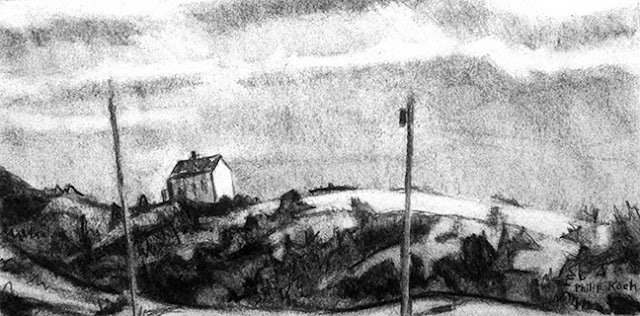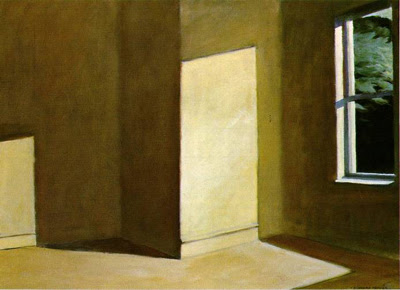Cool Museum! Virginia Museum of Fine Arts
Just back from a trip to Virginia to see some art museums. The Virginia Museum of Fine Arts in Richmond just reopened after a big expansion project. I was curious to see what they'd been up to as I'd visited the place a few years back in their previous incarnation and enjoyed it a lot. But the new place was huge and in a word, "wow."
It is much bigger now, huge for a city of Richmond's size, but they have a pretty powerful collection, so it is great to see them have the expanded gallery space to put it to use. In particular, I loved seeing so many new walls devoted to their early 2oth century American paintings. That's a period that sometimes museums don't devote a lot of space to. Not so here.
Above is me standing next to one of VFMA's gems by Edward Hopper (I'm delighted to report I'll be going up to stay and work in Hopper's old painting studio on Cape Cod for my 13th time this Fall!!). Hopper was one of my great teachers. It was his example that turned me from painting colorful abstractions towards working as a realist painter.
This is a painting I used to study in reproductions as I loved the contrast of the fading natural light against the glow from the electric lamps inside the apartment windows. One of the things Hopper does so well in this painting is an almost endless series of subtle gradations in the grey brick building from warm to cool grey and from slightly lighter to just a touch darker tones. It makes the walls seem to breathe a sigh with the fading of the day. Very tender and very beautiful.

Here's my friend Rockwell Kent, the famous printmaker and activist doing an oil, Greenland Summer. Kent was a contemporary of Hopper and shared with him a delight in strong sunlight, long cast shadows, and very solid concrete forms. The female figure in the foreground is very beautifully drawn and has to be seen in person to really appreciate it fully. I alway prefer Kent's wood engravings most of all, but of his oils, this is one of his strongest in my opinion.
I just loved discovering this oil by an artist I'd never heard of (and now I'm wondering "why not?"). It's by Thomas Fransioli (American 1906-97) and titled St. Andrew's Church, Roanoke, VA, 1951. So often all we see from that period in museums or the art books is abstract expressionist painting. Here we see there were other branches growing on the tree of art that decade that were just as interesting. I love this painting. It has a mystery and stillness to it that feels deeply authentic. This is the sort of thing you hope to stumble across when you visit regional museums.
Here's my wife Alice admiring a superb Thomas Hart Benton painting about American colonial history. Benton had a sharp eye for the expressiveness of flat shapes and the empty intervals between them. Look at the space between the lower left figure's head and neck and his upraised hand. They frame a section of another figures green long coat the has a perfect shadow shape breaking up the interval. I always think of the picture puzzles I put together as a kid (my family was heavily into the 500 piece kind) when I look a paintings by Benton. Individual forms in his paintings are a little rigid and stylized, but the overall rhythm he creates across the canvas is usually a real triumph, as it is here. Lastly, I love the strange dark green sky Benton came up with to contrast against the white ship's sails.
And just to show I don't ignore those Europeans, here's a great little sketch by the French painter Frederic Bazille, a friend of Claude Monet's. Bazille was dripping with talent but sadly his life was cut short while he fought in the Franco-Prussian war. Had he lived he probably would have given us a tremendous pile of masterpieces. Look at how much he made of the corner of his studio. There's a curious subtle bending of the perspective that leads your eye up and to the left as you rise up from the empty floorboards of the foreground. Imagine for a moment how the painting would have looked had Bazille taken all the little paintings hanging on the back wall away for a show. The emptiness of the front needs the decorative complexity of the back to feel right. This is a painting about exquisite balance and proportion. A lot of those 19th century French painters were pretty amazing in that department.
If you can, I highly recommend a trip to Richmond to check out the new VMFA. Amazingly, the darned place has free admission and even their parking garage is only three bucks. For someone used to the stratospheric prices in other East Coast cities, this is a surprise. But the real treat is the work in the new museum. I'm already plotting a second visit when I go back for a show I'm having at another Virginia art museum next summer.






